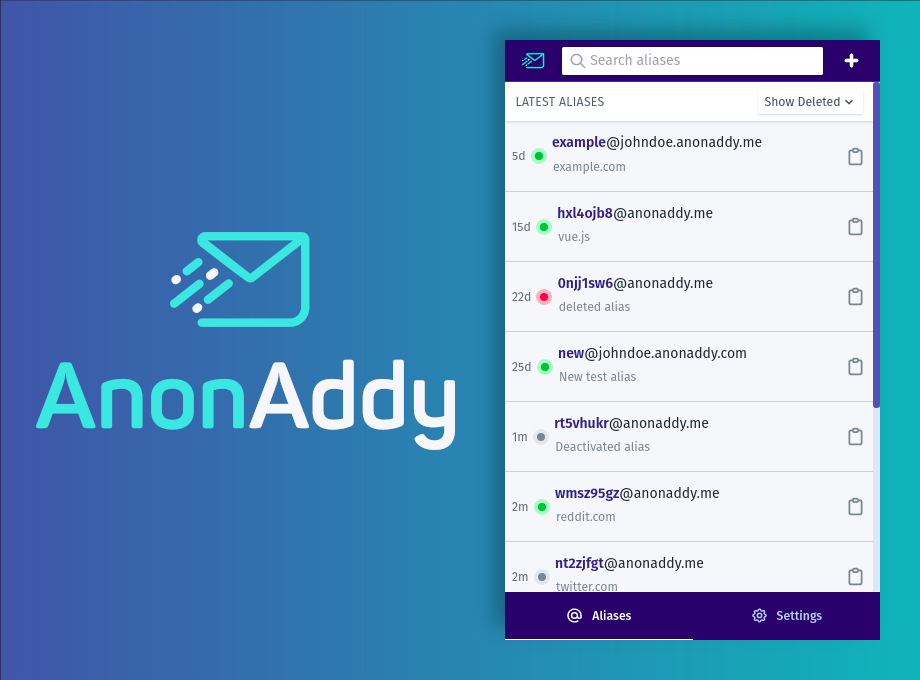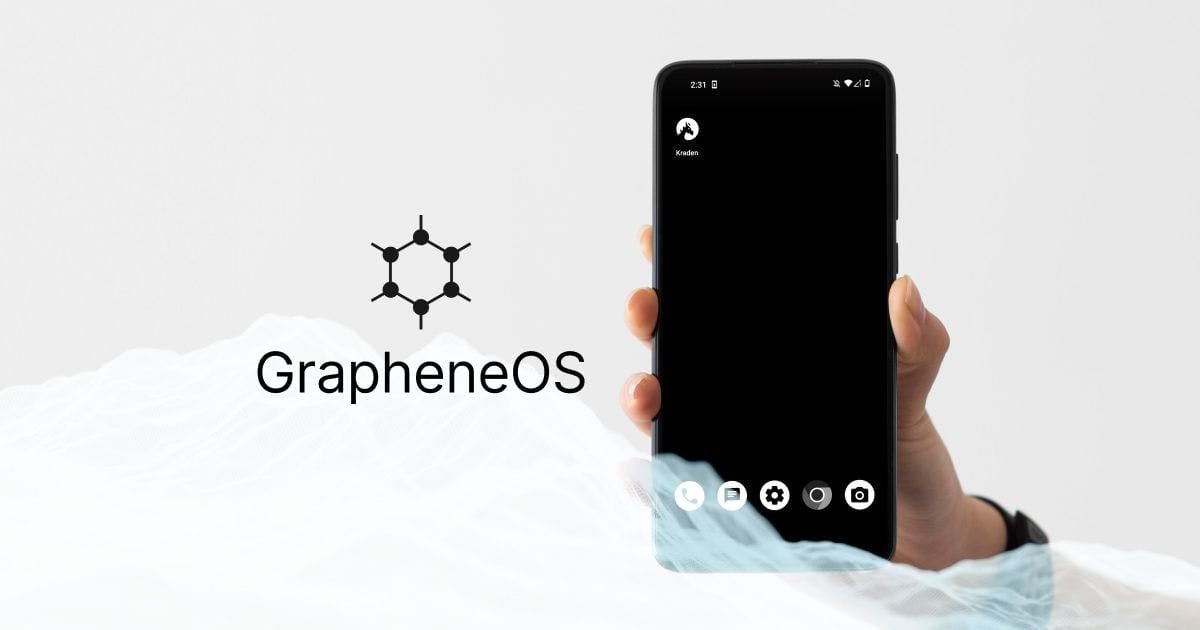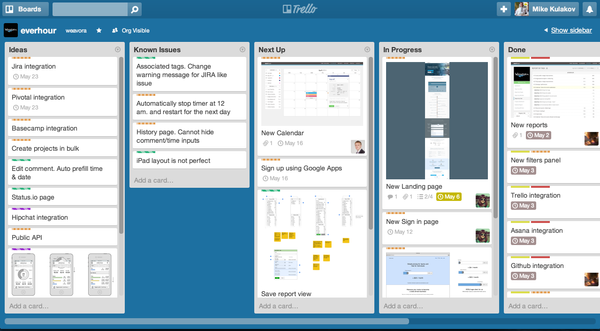The Growing Frustration with Big Tech
In today’s digital age, it’s becoming increasingly clear that our personal data is no longer as private as we’d like it to be. Every click, every search, and every purchase we make online is being tracked, analysed, and often sold to the highest bidder.
Big tech companies have built empires on the backs of our personal information, often without our explicit consent or understanding. The frustration with this constant invasion of privacy is palpable, and many are starting to seek alternatives that can protect their data.
The Erosion of Data Privacy
Data breaches, targeted ads, and the sense that someone is always watching are more than just annoyances; they are symptoms of a larger problem—our loss of control over personal information.
For years, we've been led to believe that trading privacy for convenience is the only option. But as the misuse of our data becomes more apparent, the need for a solution that puts control back in the hands of the user is more urgent than ever.
Introducing GrapheneOS – A Solution for Reclaiming Your Privacy
Enter GrapheneOS, an operating system designed with one purpose in mind: to protect your privacy. Unlike the mainstream operating systems that come pre-installed on most smartphones, GrapheneOS is built from the ground up to give you control over your data. Whether you're fed up with intrusive apps, concerned about government surveillance, or simply want to use your phone without being constantly tracked, GrapheneOS offers a way to reclaim your digital life.
Overview: What We’ll Cover
In this article, we will take a deep dive into what GrapheneOS is, why it’s essential for anyone concerned about data privacy, and how you can install it on your device. We’ll explore the benefits that come with using a privacy-focused operating system and also discuss some of the potential drawbacks you should be aware of. By the end of this post, you’ll have a clear understanding of whether GrapheneOS is the right choice for you and how you can start taking back control of your data.
What is GrapheneOS?
The Origins and Purpose of GrapheneOS
GrapheneOS was born out of a growing concern over the lack of privacy and security in mainstream mobile operating systems. Originally developed as a privacy and security-focused alternative to the standard Android OS, GrapheneOS is an open-source project that prioritises user autonomy and data protection above all else. The project was initiated by Daniel Micay, a prominent figure in the tech community known for his expertise in cybersecurity. GrapheneOS has quickly gained a reputation for being one of the most secure and privacy-respecting operating systems available for mobile devices.
Comparison: GrapheneOS vs. Mainstream Operating Systems
Unlike the mainstream operating systems like Android and iOS, which often come pre-loaded with bloatware, tracking software, and apps that compromise user privacy, GrapheneOS is designed to give users control over their data from the ground up. While Android and iOS are known for their user-friendly interfaces and extensive app ecosystems, they also have significant drawbacks in terms of privacy. Android, for example, is tightly integrated with Google services, which are notorious for data collection. iOS, although better in some aspects, still has its limitations and is often criticised for its closed-source nature, which prevents independent verification of its privacy claims.
GrapheneOS, on the other hand, strips away these invasive elements, providing a clean, minimalistic platform that is highly customisable and secure. It does not include Google services by default, which means users are not subject to the same level of data collection. Additionally, because GrapheneOS is open-source, its code is publicly available for scrutiny, ensuring transparency and allowing the community to audit its security features.
Core Features: What Makes GrapheneOS Stand Out
- Enhanced Security: GrapheneOS is built with advanced security features that protect against a wide range of threats, including sophisticated attacks like zero-day exploits. It includes hardened memory allocators, a rigorous application sandbox, and additional security layers that are not found in other operating systems.
- Privacy Controls: The operating system offers granular control over permissions and settings, allowing users to decide exactly what data is accessible by apps. Unlike other OSes that might only allow a binary choice of allowing or denying access to certain data, GrapheneOS provides nuanced options, such as granting access only when an app is in use.
- No Default Google Services: By default, GrapheneOS does not include any Google services, which are known for extensive data collection. Users can choose to install Google apps if needed, but they can do so with the knowledge that their device isn’t automatically sending data to Google’s servers.
- Open-Source Transparency: Every aspect of GrapheneOS is open-source, meaning anyone can inspect the code for potential vulnerabilities or privacy concerns. This transparency builds trust within the community and ensures that the operating system remains aligned with its privacy-focused mission.
- Regular Updates: GrapheneOS is actively maintained, with frequent updates that address security vulnerabilities and enhance features. This commitment to regular updates ensures that users are always protected against the latest threats.
Why You Should Consider Using GrapheneOS
Data Privacy Concerns: The Growing Need for Protection
In an era where data breaches are becoming increasingly common, the need to protect personal information has never been more urgent. Major tech companies have faced criticism for their handling of user data, often storing and selling information without explicit user consent. This has led to a growing distrust in these companies, as well as a desire for alternatives that prioritise user privacy. GrapheneOS addresses these concerns by providing a platform that minimises data collection and maximises user control. For anyone who has grown weary of having their personal information harvested for profit, GrapheneOS offers a way to regain control.
Security Benefits: A Fortress Against Digital Threats
Beyond privacy, security is another critical concern in today’s digital landscape. With the rise of sophisticated cyberattacks, such as phishing schemes, ransomware, and zero-day exploits, the need for a secure operating system is paramount. GrapheneOS is designed with security as its core principle. It includes features like hardened memory allocators and an application sandbox that isolates apps from each other, reducing the risk of malware spreading across the system. The operating system also employs a rigorous update schedule, ensuring that users are protected against the latest threats. For individuals who prioritise security, especially those who may be targets of advanced attacks, GrapheneOS provides peace of mind.
Ethical Considerations: Supporting a Mission-Driven Project
Many people are increasingly concerned about the ethics of the companies they support. Big tech companies have often been criticised for their practices, such as avoiding taxes, exploiting labour, and engaging in anti-competitive behaviour. By choosing GrapheneOS, users are supporting a project that aligns with ethical values of transparency, user autonomy, and open-source development. GrapheneOS is a non-profit project that is not driven by commercial interests, meaning that its primary goal is to serve its users rather than to generate profit. For those who want to support a mission-driven project that prioritises user rights and privacy, GrapheneOS is an appealing choice.
Personal Empowerment: Taking Control of Your Digital Life
One of the most compelling reasons to switch to GrapheneOS is the sense of empowerment it provides. In a world where we are constantly being monitored and tracked, using an operating system like GrapheneOS allows individuals to take back control of their digital lives. With GrapheneOS, users can decide which apps have access to their data, which services they want to use, and how their information is stored. This level of control is empowering, especially for those who feel overwhelmed by the pervasive surveillance in modern technology. By making the switch to GrapheneOS, users can reclaim their digital freedom and protect their privacy on their own terms.
How to Install GrapheneOS
Preparation: Getting Ready for Installation
Before diving into the installation process, it’s important to ensure that you have everything you need to make the transition to GrapheneOS as smooth as possible. Here’s a checklist to help you prepare:
- Compatible Device: First, verify that you have a compatible device. GrapheneOS is currently supported on select Google Pixel devices, which are chosen for their high security standards and open-source firmware.
- Backup Your Data: It’s crucial to back up any important data from your current device. Installing GrapheneOS will require a factory reset, which means all data on the device will be wiped.
- Computer with Internet Access: You’ll need a computer with internet access to download the necessary files and to perform the installation.
- USB Cable: Make sure you have a USB cable to connect your phone to the computer.
- GrapheneOS Factory Images: Download the latest GrapheneOS factory images from the official GrapheneOS website.
Step-by-Step Guide: Installing GrapheneOS on Your Device
Now that you’re prepared, let’s walk through the installation process. Although the steps may seem technical, following this guide closely will make it manageable, even for those who aren’t tech-savvy.
Unlock the Bootloader:
- Start by unlocking the bootloader of your device. This step is necessary to install a custom operating system like GrapheneOS. Keep in mind that unlocking the bootloader will erase all data on the device.
- Connect your device to the computer via USB.
- Open a command prompt (Windows) or terminal (macOS/Linux) and enter the following command:
adb reboot bootloader. - Once in the bootloader, enter:
fastboot flashing unlock. Follow the on-screen instructions to confirm.
Install GrapheneOS:
- Download the GrapheneOS factory images and extract them to a folder on your computer.
- Open the folder and run the installation script provided (e.g.,
flash-all.shfor macOS/Linux orflash-all.batfor Windows). - The script will automatically flash the GrapheneOS system images to your device. This process may take a few minutes. Do not disconnect your device during this step.
- Once the installation is complete, the device will reboot into GrapheneOS.
Initial Setup:
- After the installation is complete, your device will boot into the GrapheneOS setup screen.
- Follow the on-screen instructions to set up your device. You’ll be prompted to connect to Wi-Fi, sign in to your accounts, and configure system settings.
- You can choose to install apps from the GrapheneOS app repository or sideload APKs if you prefer.
Optional: Re-lock the Bootloader:
- For added security, you may want to re-lock the bootloader after installation. This step is optional but recommended.
- To re-lock the bootloader, reboot into the bootloader by entering:
adb reboot bootloader. - Once in the bootloader, enter:
fastboot flashing lock. Follow the on-screen instructions to confirm. - The device will perform a factory reset and then boot into the locked GrapheneOS system.
Troubleshooting: Common Issues and Solutions
While the installation process is generally straightforward, you might encounter some issues along the way. Here are a few common problems and how to address them:
- Device Not Recognised by Computer: Ensure that USB debugging is enabled on your device and that the necessary drivers are installed on your computer.
- Bootloop After Installation: If your device gets stuck in a bootloop, try re-flashing the factory images. This issue can sometimes occur if the installation process is interrupted.
- Failed Installation: If the installation script fails, double-check that all files were downloaded correctly and that the USB cable is securely connected.
Resources: Additional Support and Guides
If you encounter any issues that aren’t covered here, or if you want to learn more about customising GrapheneOS, the following resources are invaluable:
- Official GrapheneOS Website: The official website offers comprehensive documentation, including an installation guide, troubleshooting tips, and a FAQ section.
- GrapheneOS Community Forums: Engage with other users and developers in the community forums, where you can ask questions and share experiences.
- YouTube Tutorials: There are several video tutorials available that walk through the installation process, which can be helpful if you prefer visual guidance.
Benefits of Using GrapheneOS
Enhanced Privacy: Protecting Your Personal Data
One of the most compelling reasons to switch to GrapheneOS is the enhanced privacy it offers. Unlike mainstream operating systems that often collect and share your data with third parties, GrapheneOS is designed to minimise data collection and give you full control over your personal information. With GrapheneOS, you can be confident that your location, contacts, and browsing habits are not being tracked or stored without your consent.
- Privacy Guard: GrapheneOS includes a built-in Privacy Guard that allows you to control which apps have access to your data. This tool provides granular control over permissions, so you can decide exactly what each app can access and when.
- No Default Google Services: Since GrapheneOS does not include Google services by default, your device is not constantly communicating with Google’s servers. This significantly reduces the amount of data that can be collected about your usage.
Increased Security: Safeguarding Against Digital Threats
GrapheneOS is widely recognised for its robust security features, making it one of the most secure mobile operating systems available. The developers of GrapheneOS have implemented a range of security enhancements that protect against both common and sophisticated threats.
- Application Sandboxing: Each app runs in its own isolated environment, which prevents malicious apps from accessing system resources or data from other apps. This reduces the risk of malware spreading across your device.
- Hardened Memory Management: GrapheneOS includes advanced memory management techniques that protect against memory corruption vulnerabilities, which are often exploited by hackers.
- Regular Security Updates: The operating system is actively maintained, with frequent updates that address the latest security vulnerabilities. This ensures that your device is always protected against new threats.
Open-Source Transparency: Trust Through Transparency
One of the core principles of GrapheneOS is its commitment to transparency. As an open-source project, the entire source code of GrapheneOS is publicly available for review. This means that anyone with the necessary technical expertise can audit the code to ensure there are no hidden backdoors or vulnerabilities.
- Community Audits: The open-source nature of GrapheneOS allows security experts from around the world to audit and contribute to the project, helping to identify and fix any potential issues.
- No Hidden Agendas: Unlike commercial operating systems, which may have undisclosed partnerships or data-sharing agreements, GrapheneOS is fully transparent about how it operates and what it does with your data.
Reduced Bloatware: A Streamlined, Efficient Experience
Mainstream operating systems often come loaded with bloatware—pre-installed apps and services that you may never use but cannot easily remove. These apps not only take up valuable storage space but can also slow down your device and compromise your privacy by collecting data in the background.
- No Unnecessary Apps: GrapheneOS comes with only the essential apps required to operate your device. This lean approach means there are no unwanted apps running in the background, which can improve performance and reduce the risk of data leaks.
- Customise Experience: Because GrapheneOS is free from bloatware, you have the freedom to install only the apps you need, creating a more personalised and efficient user experience.
Long-Term Viability: A Sustainable, Privacy-Focused Choice
Choosing GrapheneOS is not just about protecting your data today; it’s about making a long-term commitment to your privacy and security. With the growing concerns over data privacy, having an operating system that is designed to protect your information will only become more important in the future.
- Sustained Development: The GrapheneOS project is actively developed and supported by a dedicated team and community. This ensures that the operating system will continue to receive updates and improvements, keeping it relevant and secure for years to come.
- Future-Proofing Your Privacy: As more people become aware of the importance of data privacy, using a platform like GrapheneOS positions you at the forefront of the privacy movement, giving you the tools to protect your information in an increasingly invasive digital world.
Drawbacks of GrapheneOS
Limited Compatibility: Device Restrictions
One of the most significant drawbacks of GrapheneOS is its limited compatibility with devices. Unlike mainstream operating systems like Android or iOS, which are available on a wide range of devices, GrapheneOS is currently only supported on select Google Pixel devices. This limitation can be frustrating for users who want to switch to GrapheneOS but do not own a compatible device.
- Hardware Requirements: GrapheneOS is specifically designed to run on Google Pixel devices because of their strong security features, such as hardware-backed security modules and a commitment to open-source firmware. This focus on security is beneficial, but it also means that users are restricted to a small selection of devices.
- Cost of Switching: If you don’t already own a compatible Pixel device, switching to GrapheneOS might require purchasing a new phone, which could be a significant expense. This can be a barrier for users who are otherwise interested in using GrapheneOS but are hesitant to invest in new hardware.
Learning Curve: Technical Challenges for Non-Tech-Savvy Users
While GrapheneOS is designed to be secure and private, it can also be more challenging to use, especially for individuals who are not particularly tech-savvy. The installation process, in particular, requires some technical knowledge, such as unlocking the bootloader and flashing the operating system. This can be intimidating for users who are accustomed to the simplicity of mainstream operating systems.
- Installation Process: As discussed earlier, installing GrapheneOS involves several technical steps that might be daunting for some users. While there are resources available to guide users through the process, it still requires a certain level of comfort with technology.
- User Interface and Experience: The user interface of GrapheneOS is clean and minimalistic, but it might not be as polished or intuitive as more commercial operating systems. Users who are used to the seamless experience provided by iOS or Android might find GrapheneOS to be less user-friendly.
- Customization Requirements: To fully utilise the privacy and security features of GrapheneOS, users may need to spend time customising settings and permissions. This level of control is a benefit for those who value privacy, but it can be overwhelming for users who prefer a more straightforward, out-of-the-box experience.
App Availability: Limited Access to Popular Apps
Another significant drawback of GrapheneOS is the limited availability of apps, especially those that rely on Google services. Since GrapheneOS does not include Google services by default, some popular apps may not be available or may require additional steps to install and use.
- No Google Play Store: Without Google Play Services, users do not have access to the Google Play Store, which is the primary source for apps on Android devices. While it is possible to sideload apps or use alternative app stores, this can be inconvenient and may not provide access to the full range of apps. The Aurora Store and F-Droid repositories cover the majority of Google Play Store apps, although some app developers require installation directly through the Play Store, which may prevent anonymous downloads via Aurora.
- App Functionality: Some apps that rely heavily on Google services may not function properly on GrapheneOS or may require additional configuration. For example, certain apps may not work without Google Play Services, or their functionality may be limited.
- Privacy vs. Convenience: The lack of easy access to certain apps highlights the trade-off between privacy and convenience. While GrapheneOS provides exceptional privacy, it does so at the cost of some app availability and ease of use.
Community Support: Reliance on a Smaller User Base
GrapheneOS, being a niche operating system, has a smaller user base compared to more mainstream alternatives. This means that official support channels are limited, and users may need to rely on community-driven resources for help.
- Limited Official Support: Unlike commercial operating systems that have dedicated customer support teams, GrapheneOS relies heavily on its community for support. This can be a drawback for users who are used to having access to official help desks or customer service representatives.
- Community Forums: While the GrapheneOS community is active and helpful, finding solutions to specific issues may require searching through forums or relying on the knowledge of other users. This can be time-consuming and may not always yield immediate results.
- Ongoing Development: As a project maintained by a smaller team, GrapheneOS may not receive updates or new features as quickly as larger operating systems. While the developers are committed to security and privacy, the pace of development may be slower than some users are accustomed to.
Conclusion
Throughout this article, we’ve explored the ins and outs of GrapheneOS, a privacy-focused mobile operating system designed to give users control over their data and enhance their digital security. We started by discussing the growing concerns over data privacy and the frustrations many people have with big tech companies and their invasive practices. GrapheneOS was introduced as a powerful solution for those looking to take back control of their personal information.
We’ve examined what makes GrapheneOS unique, from its robust security features to its open-source transparency and lack of pre-installed bloatware. We also provided a detailed, step-by-step guide on how to install GrapheneOS, making it accessible even for those who may not be tech-savvy. The benefits of using GrapheneOS, such as enhanced privacy, increased security, and the ability to customise your device, were discussed in depth, along with the potential drawbacks, including limited device compatibility, a steeper learning curve, and the challenges of app availability.
Final Thoughts: Why GrapheneOS Matters
In a world where our personal data is increasingly under threat, GrapheneOS represents a significant step forward in the fight for digital privacy and security. While it may not be the easiest operating system to use or the most widely compatible, its commitment to protecting user data is unmatched. For those who are serious about safeguarding their privacy and taking control of their digital lives, GrapheneOS offers a compelling alternative to mainstream operating systems.
Whether you’re an activist concerned about surveillance, a business owner protecting sensitive information, or simply a consumer fed up with invasive tracking, GrapheneOS provides the tools you need to regain your digital autonomy. It’s not just about avoiding ads or preventing data collection; it’s about empowering yourself to make informed decisions about how your data is handled and who has access to it.
Take Control of Your Digital Privacy
If you’re ready to take the next step in protecting your digital privacy, consider giving GrapheneOS a try. It may require some effort to set up, and there may be a learning curve, but the benefits far outweigh the challenges. By choosing GrapheneOS, you’re not just making a choice for today—you’re investing in your long-term privacy and security.
Take control of your digital life. Visit the official GrapheneOS website to learn more, download the operating system, and join a community of like-minded individuals who value privacy as much as you do. Your data is yours—don’t let anyone take it away from you.
FAQs
To address some of the common questions and concerns that readers might have about GrapheneOS, we've compiled a list of frequently asked questions. These FAQs aim to provide additional clarity and support for those considering making the switch.
1. What is GrapheneOS, and how is it different from Android?
GrapheneOS is a privacy and security-focused mobile operating system that is built on the Android Open Source Project (AOSP). Unlike standard Android, which comes with Google services and apps that track user data, GrapheneOS is designed to give users full control over their privacy. It removes all Google services by default and includes additional security features that are not present in standard Android.
2. Is GrapheneOS difficult to install?
Installing GrapheneOS requires some technical knowledge, especially when it comes to unlocking the bootloader and flashing the operating system. However, there are detailed guides available, and if you follow the steps carefully, even those with limited tech experience can successfully install it. It’s important to back up your data before starting the installation process.
3. Which devices are compatible with GrapheneOS?
GrapheneOS is currently compatible with select Google Pixel devices. This is due to the security features offered by these devices, such as hardware-backed security modules and open-source firmware. If you don’t own a compatible device, you may need to purchase one to use GrapheneOS.
4. Can I use Google apps on GrapheneOS?
Yes, you can use Google apps on GrapheneOS, but they need to be installed manually. Since GrapheneOS doesn’t include Google services by default, some apps that rely on these services may require additional configuration or may not work as expected. However, this setup allows you to use Google apps without the same level of data tracking.
5. How does GrapheneOS enhance security compared to other operating systems?
GrapheneOS includes several advanced security features that go beyond what is offered by standard Android or iOS. These include hardened memory management, application sandboxing, and regular security updates. The open-source nature of GrapheneOS also allows for community audits, ensuring that the operating system remains secure.
6. What are the main drawbacks of using GrapheneOS?
The main drawbacks include limited device compatibility, a steeper learning curve for non-tech-savvy users, and reduced app availability due to the lack of Google services. Additionally, because GrapheneOS has a smaller user base, official support is limited, and users may need to rely on community forums for assistance.
7. Is GrapheneOS suitable for everyday use?
Yes, GrapheneOS is suitable for everyday use, especially for those who prioritize privacy and security. While it may not have the same level of polish or app availability as mainstream operating systems, it offers a robust, secure, and privacy-respecting alternative. Many users have successfully integrated GrapheneOS into their daily lives.
8. How often does GrapheneOS receive updates?
GrapheneOS is actively maintained and receives regular updates that address security vulnerabilities and enhance features. The development team is committed to ensuring that users have access to the latest security protections.
9. Can I revert to my original operating system if I don’t like GrapheneOS?
Yes, if you decide that GrapheneOS isn’t the right fit for you, you can revert to your original operating system. This process typically involves flashing the original firmware back onto your device. Be sure to back up your data before making any changes to your operating system.
10. Where can I find more information and support for GrapheneOS?
You can find more information on the official GrapheneOS website, which includes detailed documentation, installation guides, and a FAQ section. Additionally, the GrapheneOS community forums are an excellent resource for support, where you can ask questions and share experiences with other users.
Further Reading


Official GrapheneOS Resources
- GrapheneOS Official Website: grapheneos.org
- The official website provides comprehensive documentation on everything from installation guides to security features. It’s the best place to start if you’re new to GrapheneOS.
- GrapheneOS FAQ: grapheneos.org/faq
- This FAQ section answers many common questions about the operating system, including technical details and troubleshooting tips.
- GrapheneOS Community Forums: GrapheneOS Forum
- Join the community of GrapheneOS users to ask questions, share experiences, and get support from other privacy-conscious individuals.
Related Articles and Guides
- "A Beginner’s Guide to GrapheneOS" – Android Police
- Read the article
- A user-friendly guide that introduces the basics of GrapheneOS, including its features, benefits, and how to get started.
- "Why You Should Consider Using GrapheneOS" – MakeUseOf
- Read the article
- This article dives into the privacy and security advantages of GrapheneOS, making a case for why more users should consider switching.
- "The Importance of Open-Source Software for Privacy" – PrivacyTools
- Read the article
- An article that explores the role of open-source software in enhancing privacy, with a focus on how projects like GrapheneOS contribute to a more secure digital environment.
Books and Publications
- "The Age of Surveillance Capitalism" by Shoshana Zuboff
- A deep dive into how big tech companies exploit personal data, offering context on why alternatives like GrapheneOS are becoming increasingly important.
- "Privacy and Freedom" by Alan F. Westin
- A classic work that explores the concept of privacy, its importance in modern society, and the challenges it faces in the digital age.
Community and Advocacy Groups
- Electronic Frontier Foundation (EFF)
- Visit EFF
- A leading non-profit organisation defending civil liberties in the digital world. EFF provides resources and support for those interested in protecting their privacy and online rights.
- PrivacyTools.io
- Visit PrivacyTools.io
- A community-driven website that offers tools and resources for enhancing online privacy, including recommendations for privacy-respecting software like GrapheneOS.
- Rainfall.one
- Visit Rainfall.one
- Empower billions of people via self-sovereign Personal AI to take back control and derive value from their data, safely and securely. Foster a responsible economy of abundant Intelligence. Enable global access to income from one’s digital existence.






